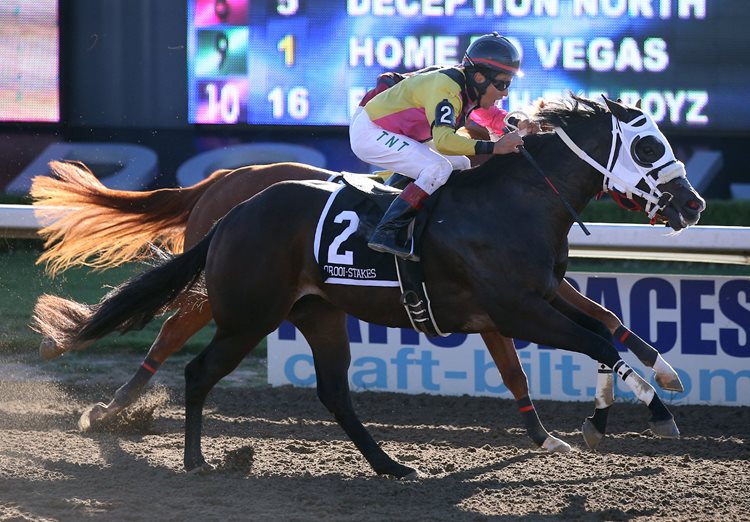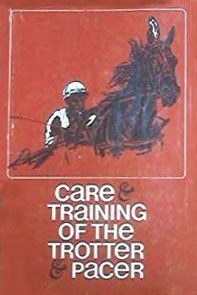
While Pedigree Matching was first introduced as a pedigree program for Standardbred race horses it has grown to be accepted by other performance breeds. The Pedigree Matching approach to breeding is equally valid for other breeds. Just ask my son Charles who is the proud first time owner of a Quarter Horse that is the Horse Of The Year in Canada – and with a pedigree typical of successful Pedigree Matching. The following explanation of Pedigree Matching is based on Standardbred experience but is every bit as appropriate to the breeding or buying of Thoroughbreds, Quarter Horses, Norwegian Coldblood trotters or indeed Tennessee Walking Horses.

The answer may well be in the "match" of the bloodlines of the sire to those of the dam. The concept of matching bloodlines as a way to develop champions has proven it's worth over the years and serious breeders would do well to study the theory and results to see if they can improve their chances of coming up with the right match for their mares. The success of a particular mating does not have to be subject more to luck than good management.
With the growing acceptance of semen transport small breeders can aspire to breed to any active sire, regardless of location. Gone are the days when breeding to the stallion up the road, because he had a couple of good ones to the races last year, was a convenient way to handle your breeding requirements. Breeders cannot afford to take a chance that such an impromptu mating will succeed. They must make informed decisions based on pedigree and like any decision the chances of being right can be greatly improved with good research and a study of past statistics.
The information they receive, though, is based on established sires and may be of little help if the boundaries of time, distance and cost make the "perfect" match unavailable or if the sire of interest is a new and unproven sire.
Among small breeders who stand their own stallion there is the tendency to breed all the farm mares to that one stud regardless of the pedigree match. Such matings will, in the long run, result in low success rates and lower prices for yearlings that far offset the short term savings involved. Smart stud owners will trade breedings with other farms to get the match that gives their mares the best chance of success.
James C Harrison in
his authoritative chapter on bloodlines and breeding in the USTA's book
Care And Training Of The Trotter and Pacer, noted that
"All the
foundation sires of the breed were relatively short bred maternally in
the sense that none of the female families that produced them ever established
lasting maternal lines of their own".
This would seem to infer that
if you want to improve on something you must focus on the weaknesses,
real or perceived, and that is where "Pedigree Matching" comes
into play. Pedigree matching presents an opportunity to improve on the
bloodlines of a sire where he may be perceived to be deficient, that is
in his maternal line, by returning to him bloodlines from a mare of similar
lineage that have shown themselves to be genetically stronger through
performance.

The goal of Pedigree Matching then is to find a way to match up the bloodlines in the maternal lines of the sire with the lineage in the bloodlines of the dam.
In the words of the experts this is called "Returning to the sire the best blood of his dam". Pedigree matching is not to be confused with "line breeding" which occurs when the top line of the sire matches the top line of the broodmare sire. This is a simple concept that ignores, however, the impact of the maternal line of both the sire and the dam on the mating.
Pedigree matching is new in name only as the original basis for the theory is to be found in Wallace’s American Trotting Register published in 1871, a publication that was the first attempt of its kind to document the history of the trotter in North America. Wallace was of the opinion that "like begets like" and that breeders would be wise to seek "to unite again two streams that originate in the same fountain, but that had been separated for a few generations." His theories have stood the test of time and are as valid today as they were over 140 years ago.
Successful breeders in the thoroughbred industry such as the Aga Khan and the legendary Federico Tesio derived their success from practising "balanced breeding", a concept that evolved from evidence that inbreeding and line breeding to selected ancestors through sons and daughters was far more successful than through sons alone or daughters alone. This finding confirms in a general way the basis for Wallace’s "two streams from the same fountain" theory.
The practice of Pedigree Matching or balanced breeding or whatever name you may want to give it would automatically provide the opportunity for the right genes to express themselves and result in top performers.